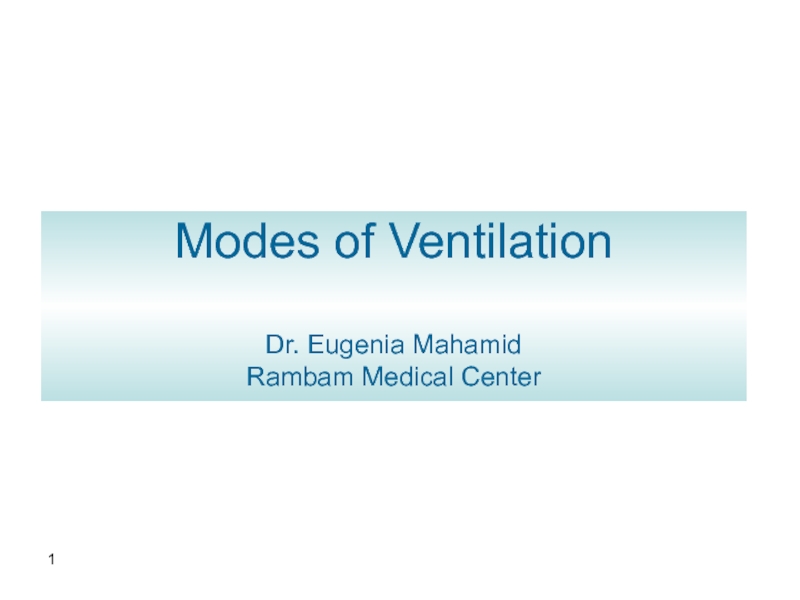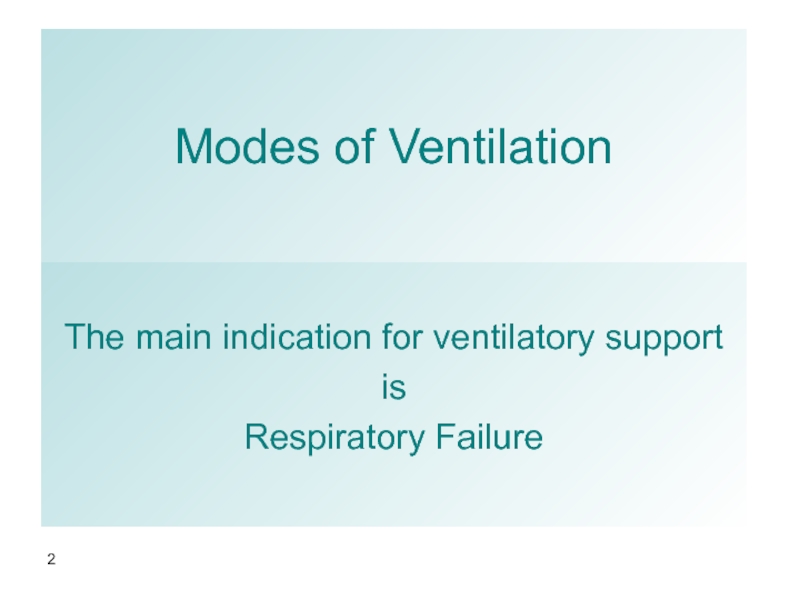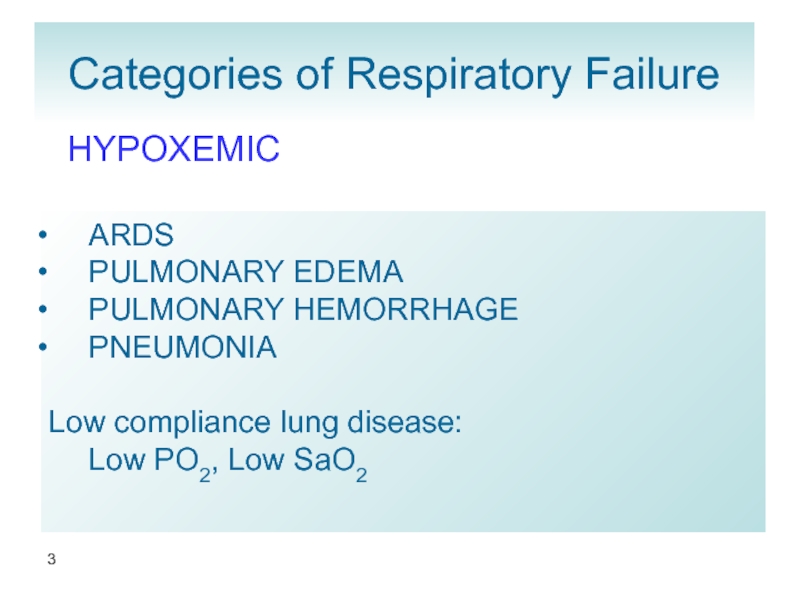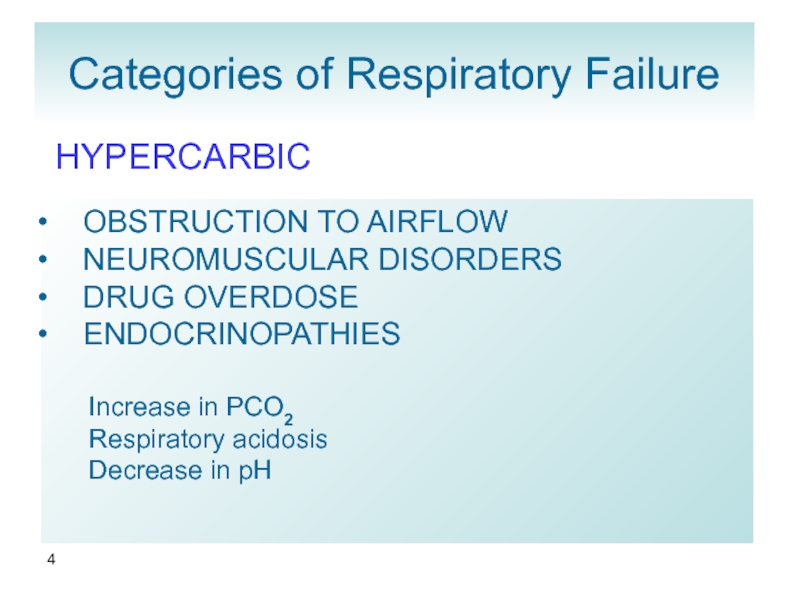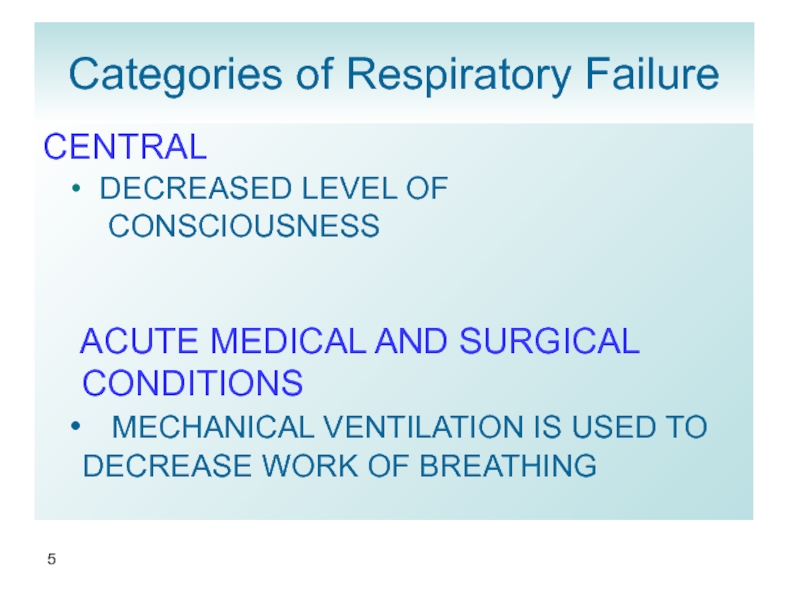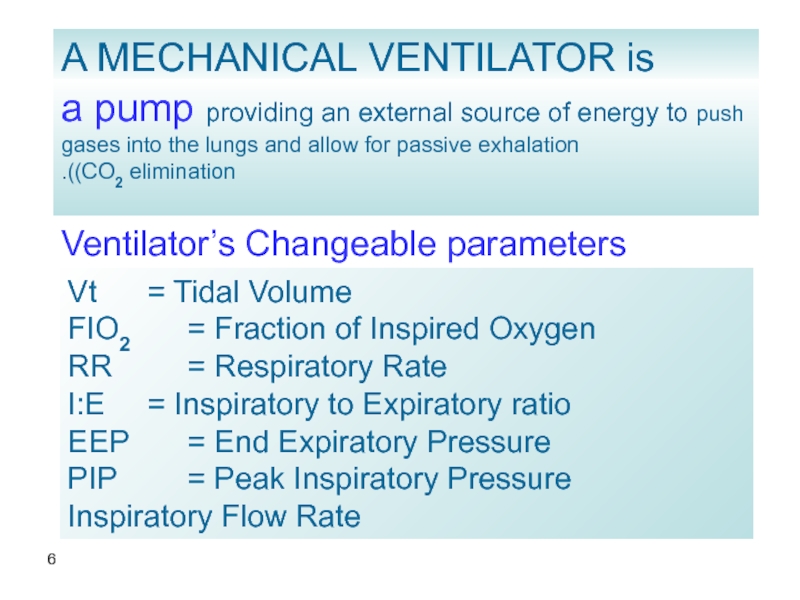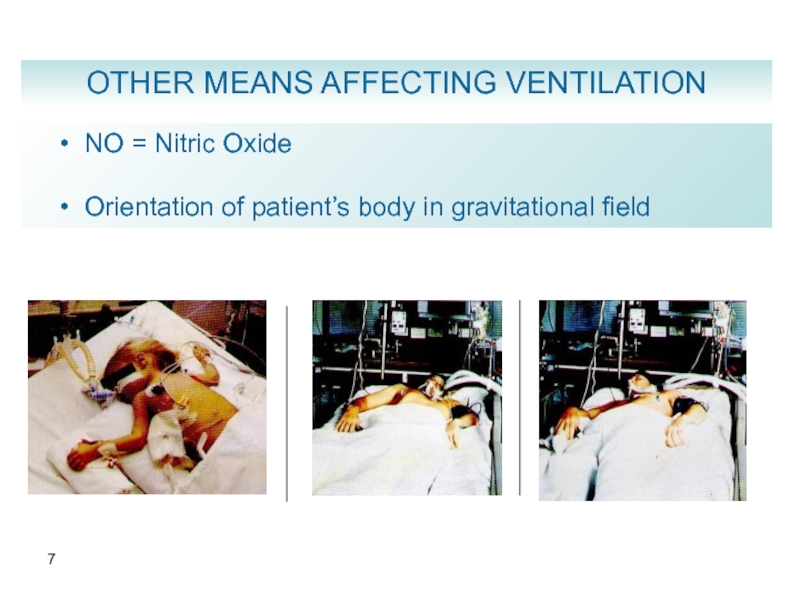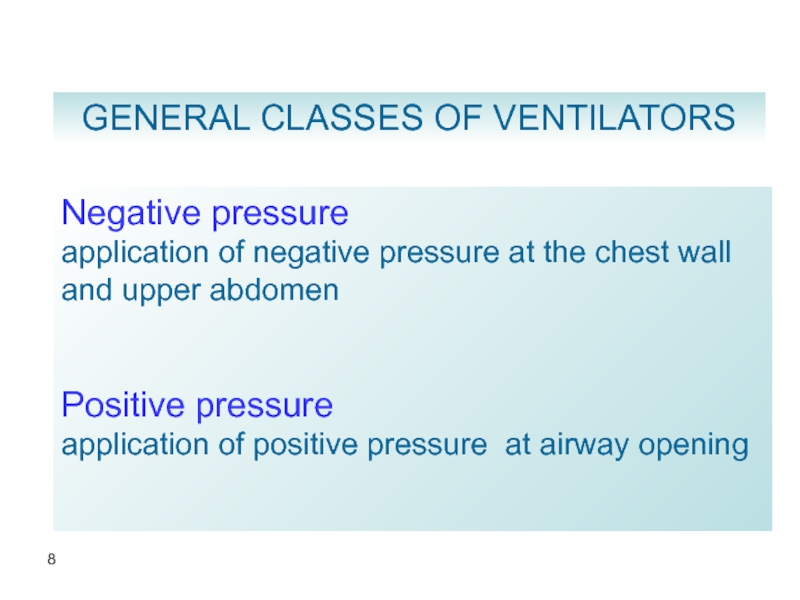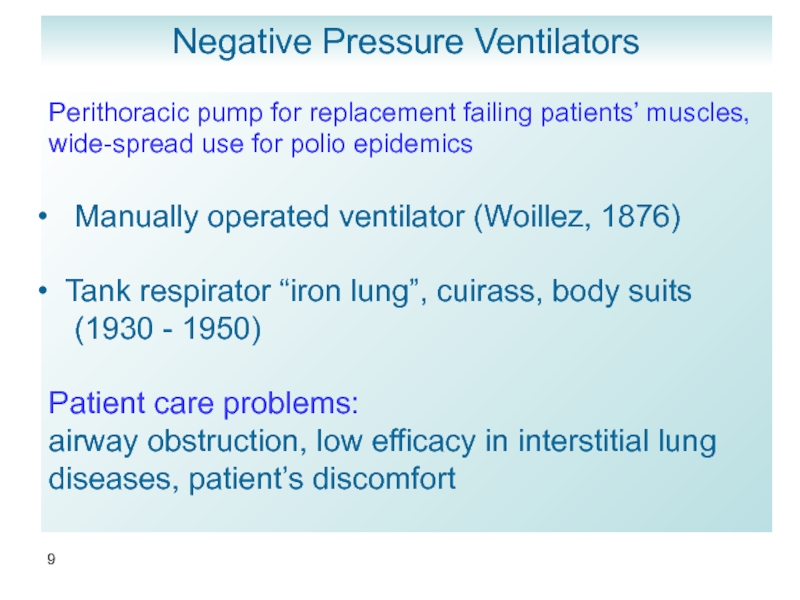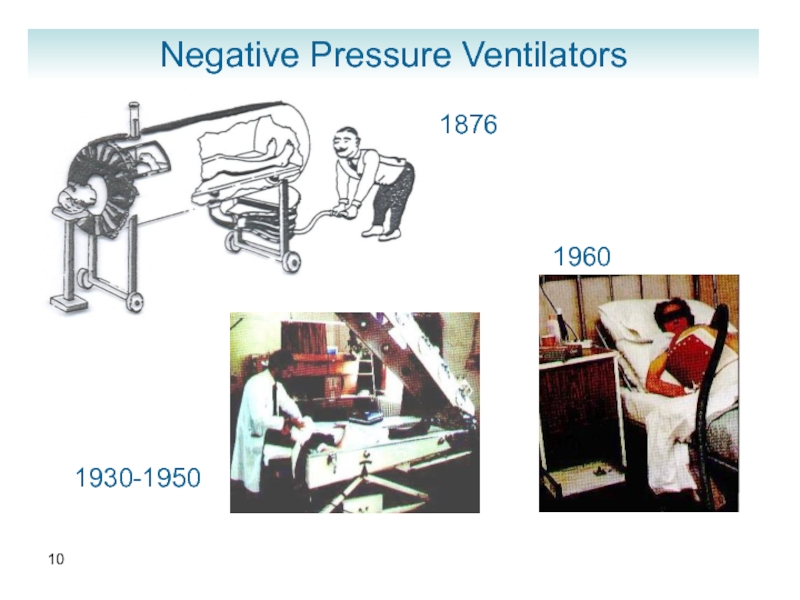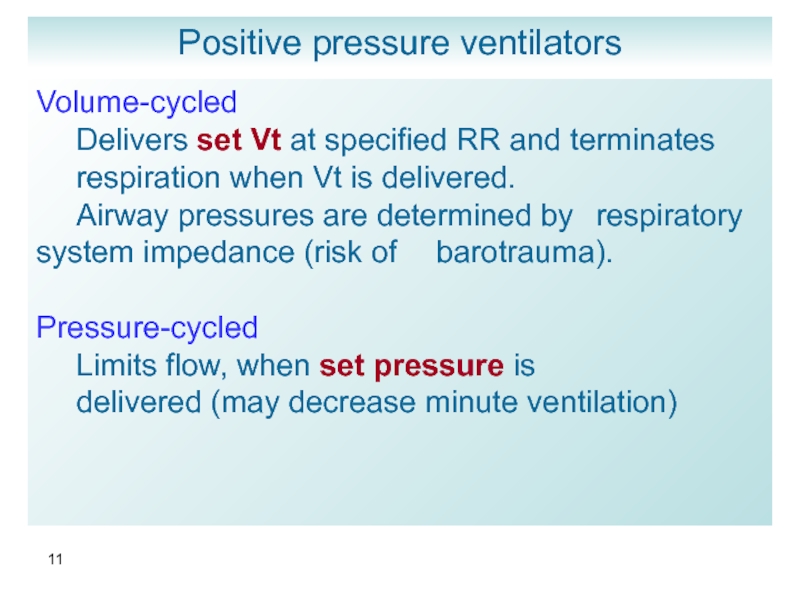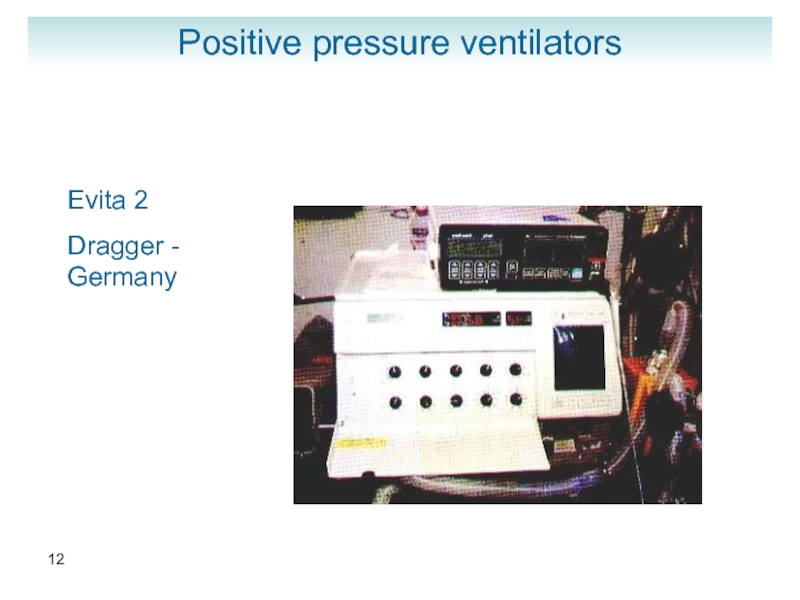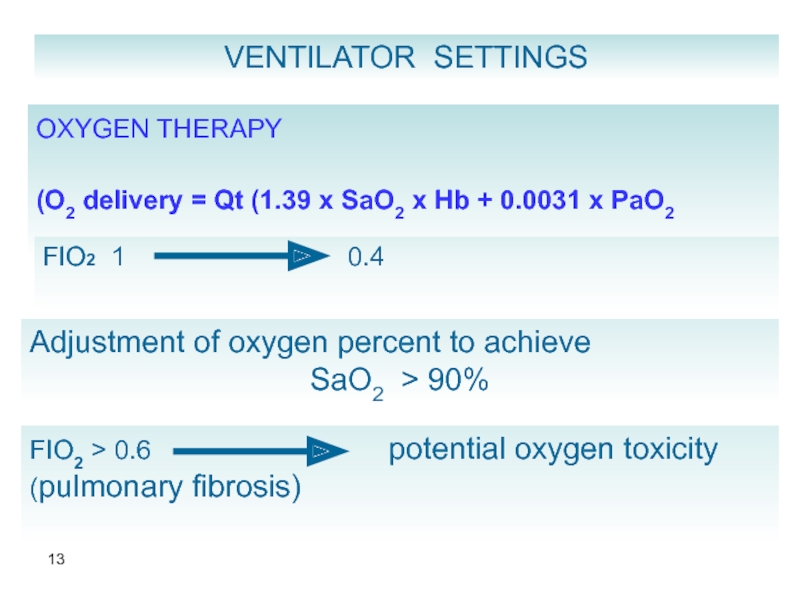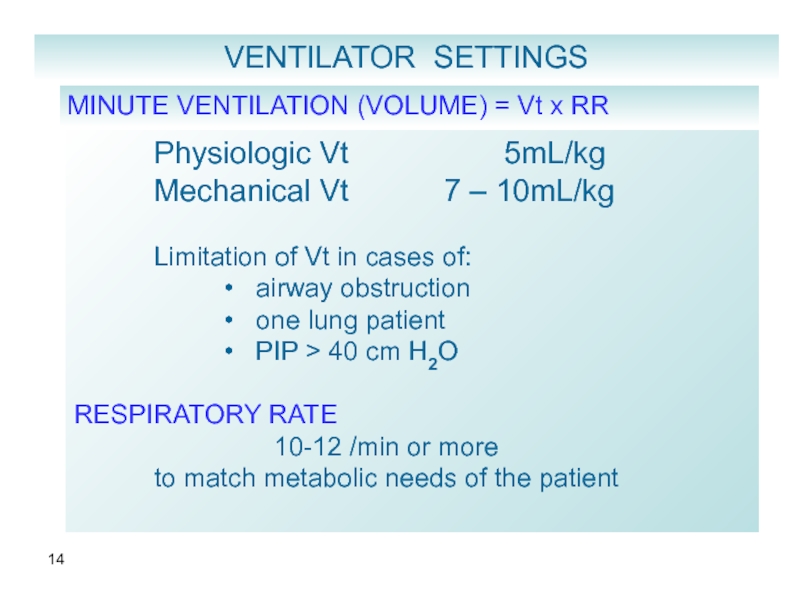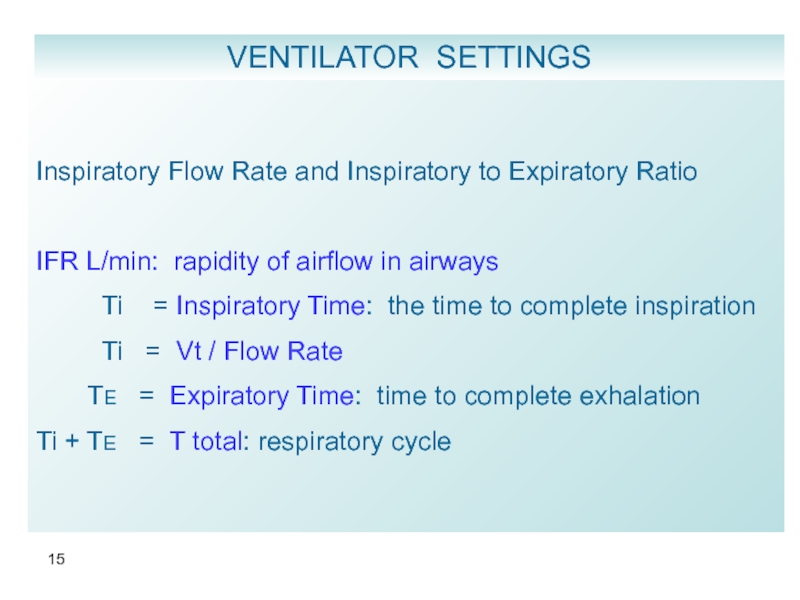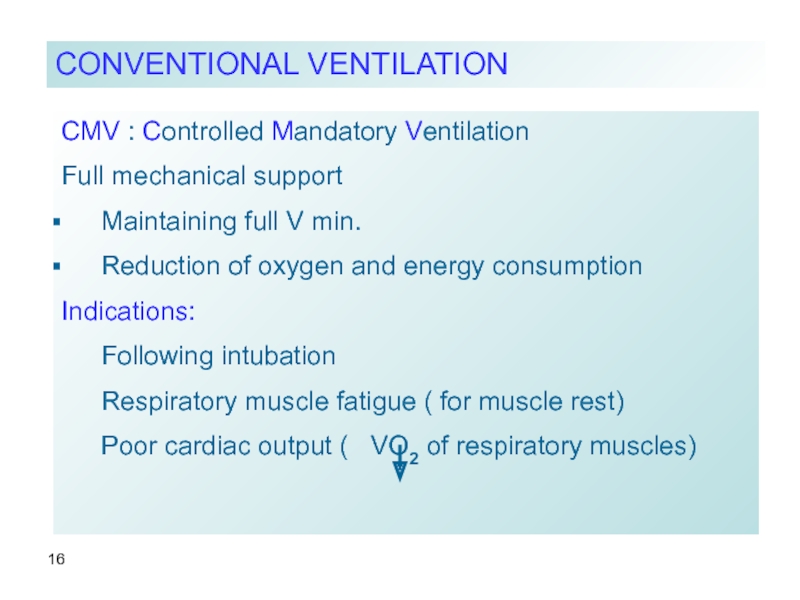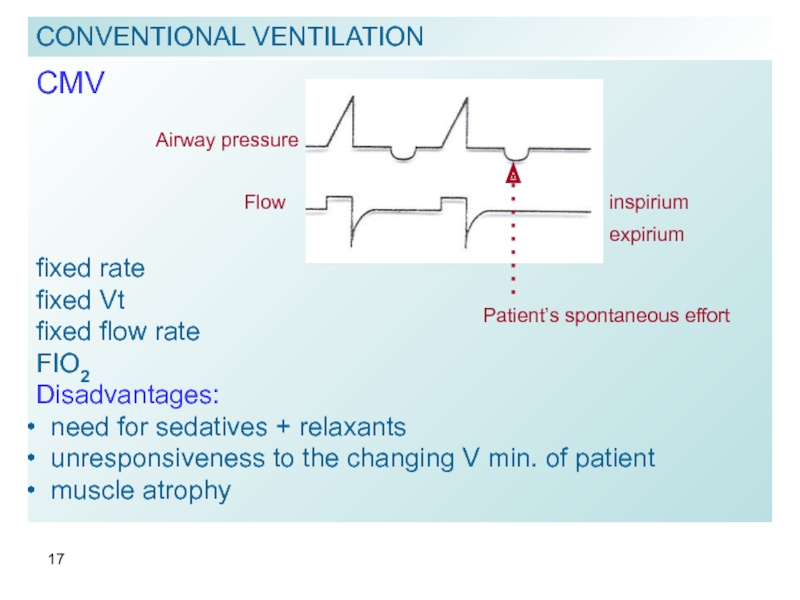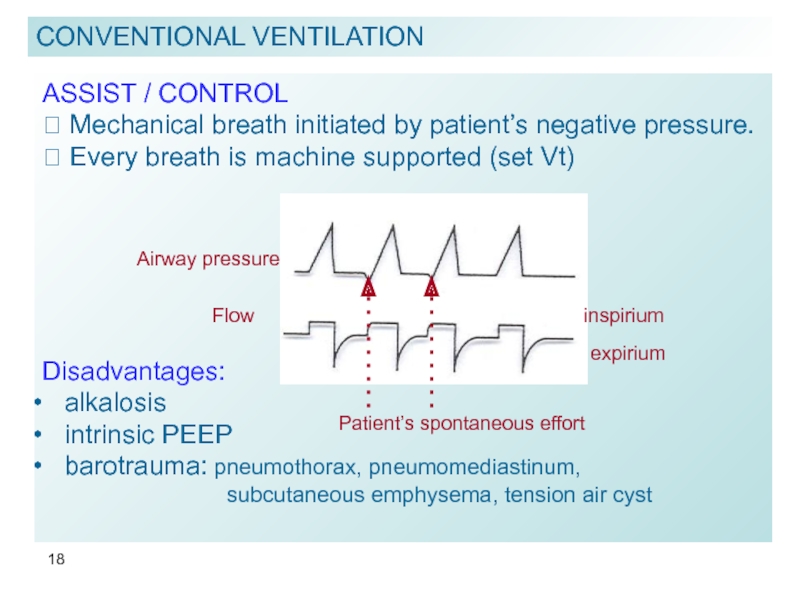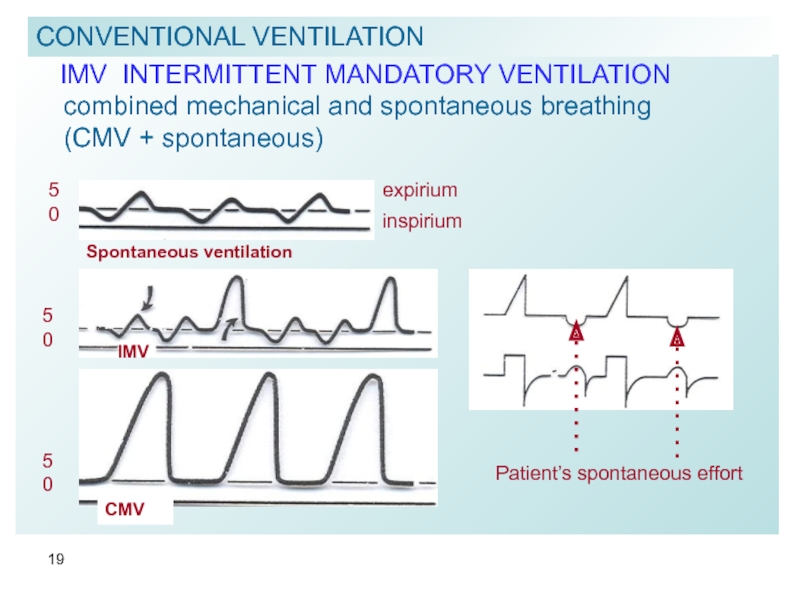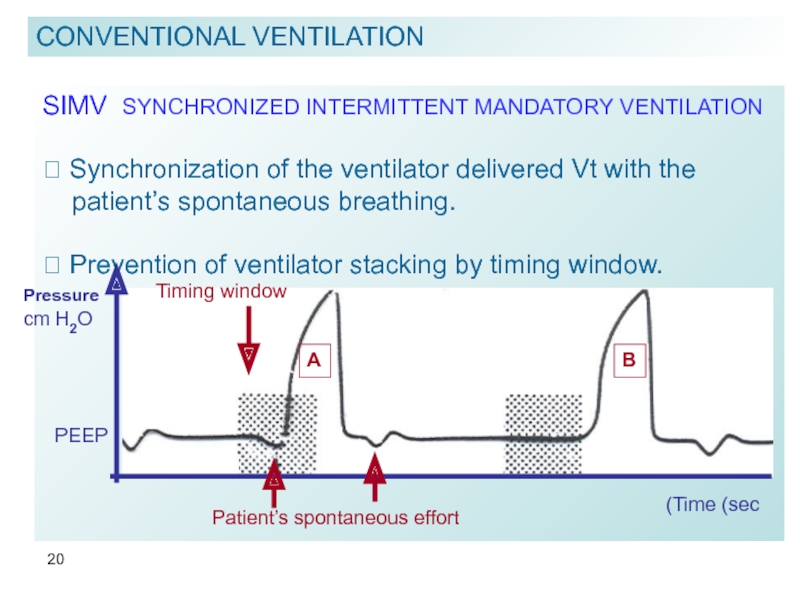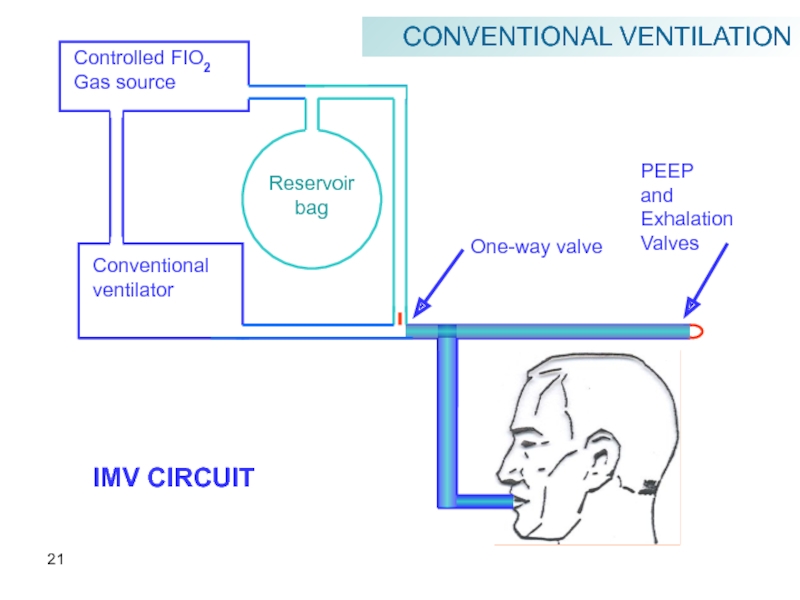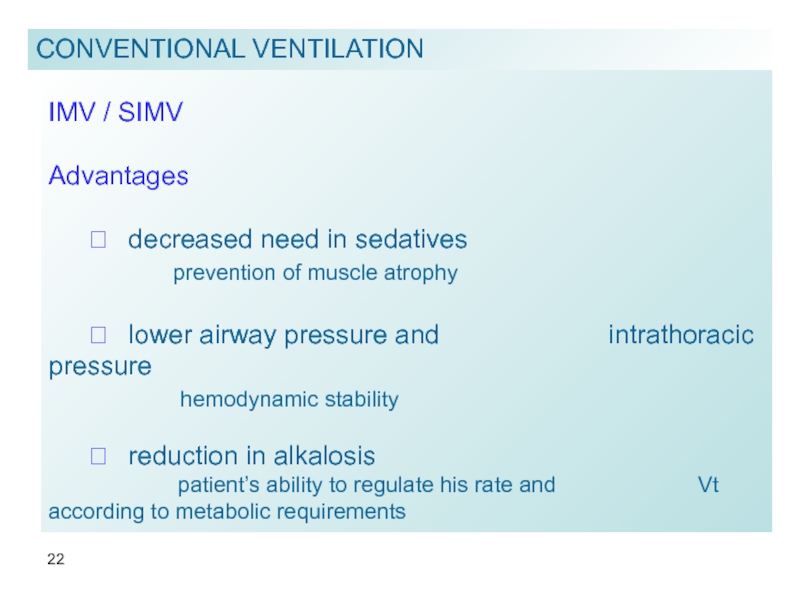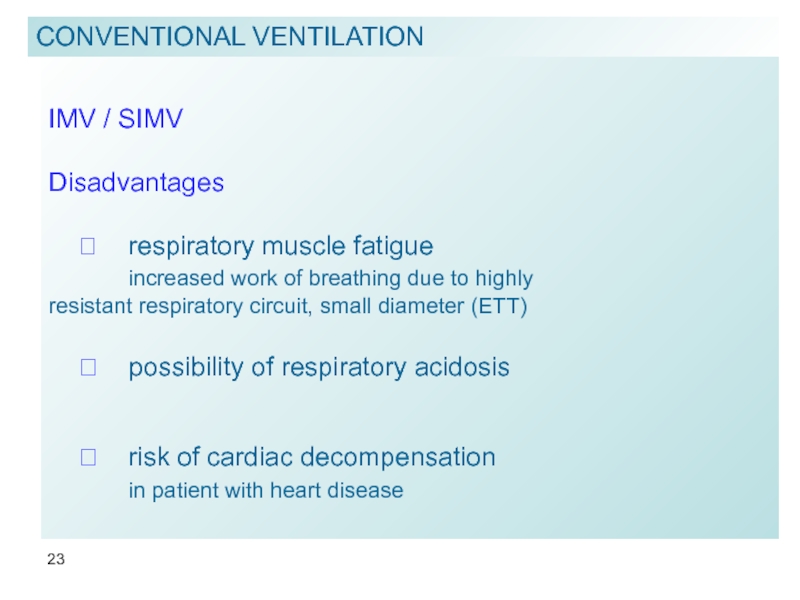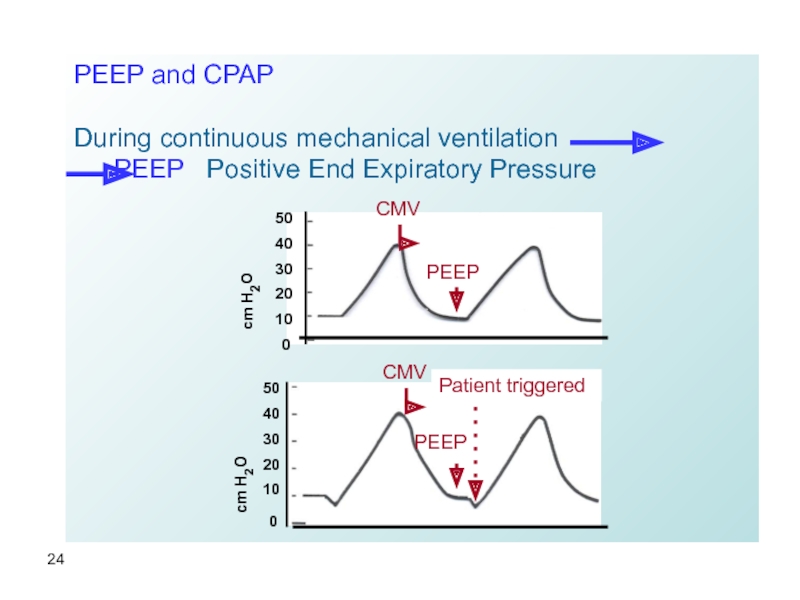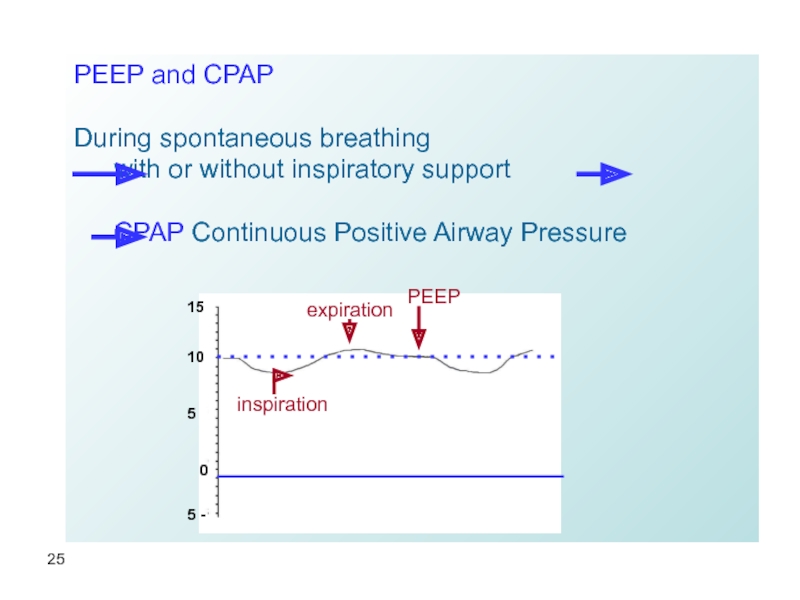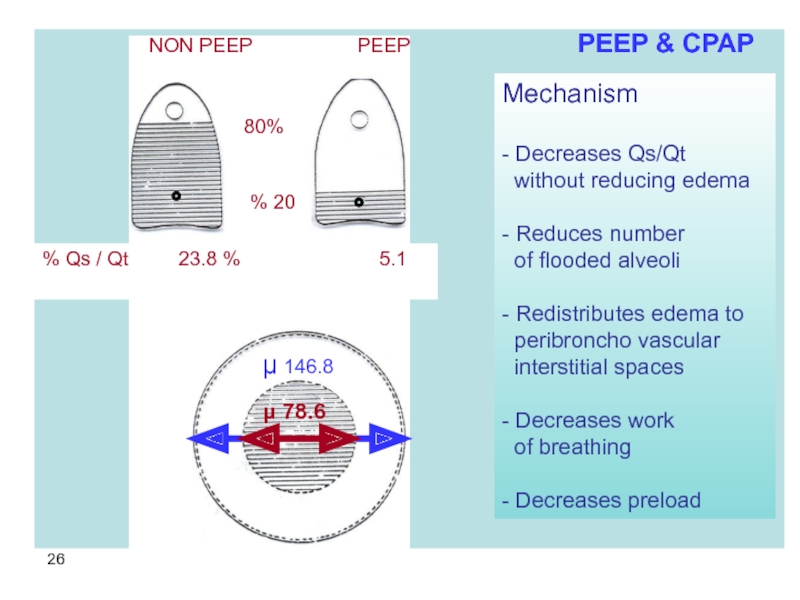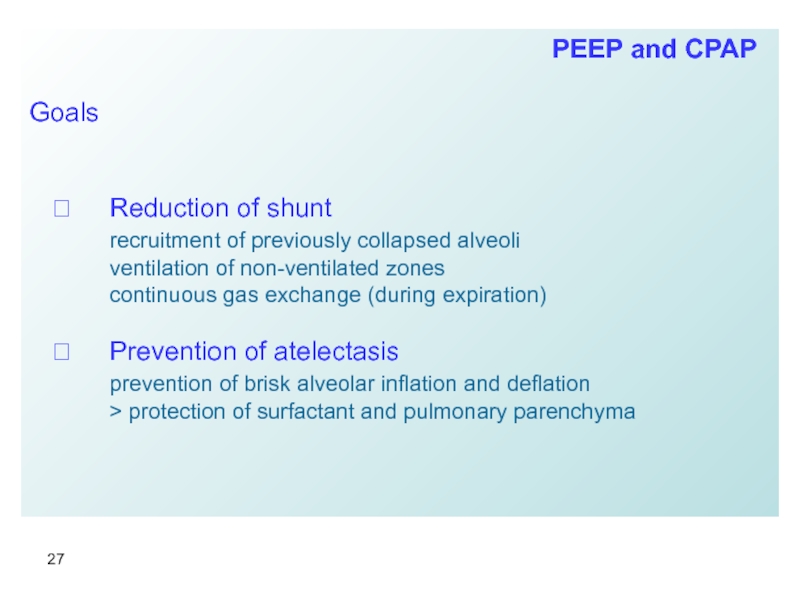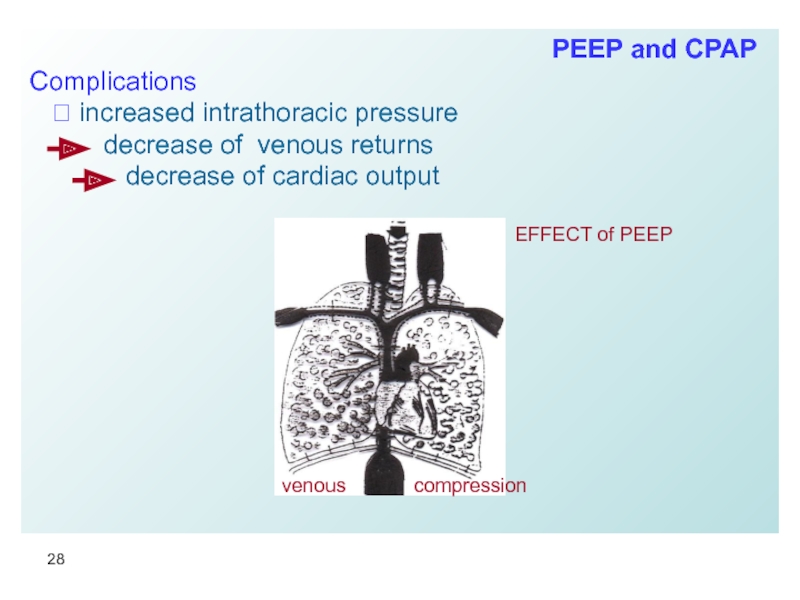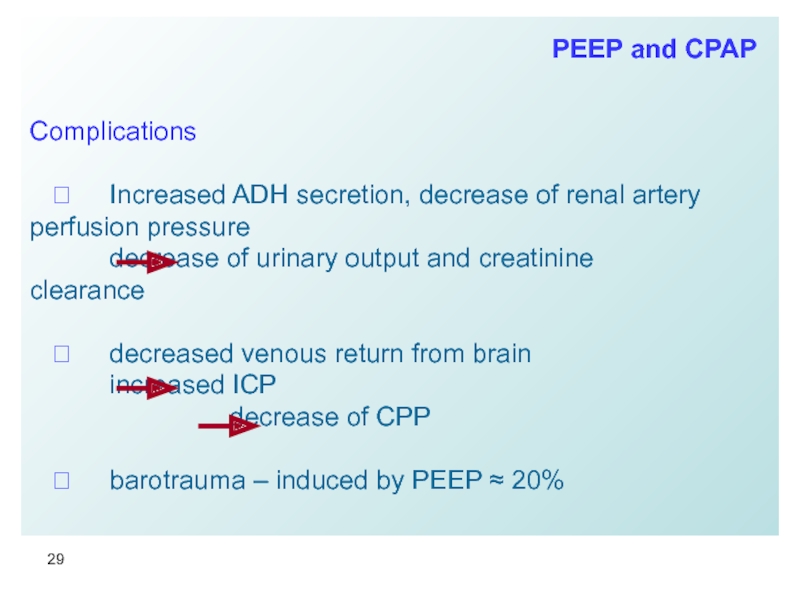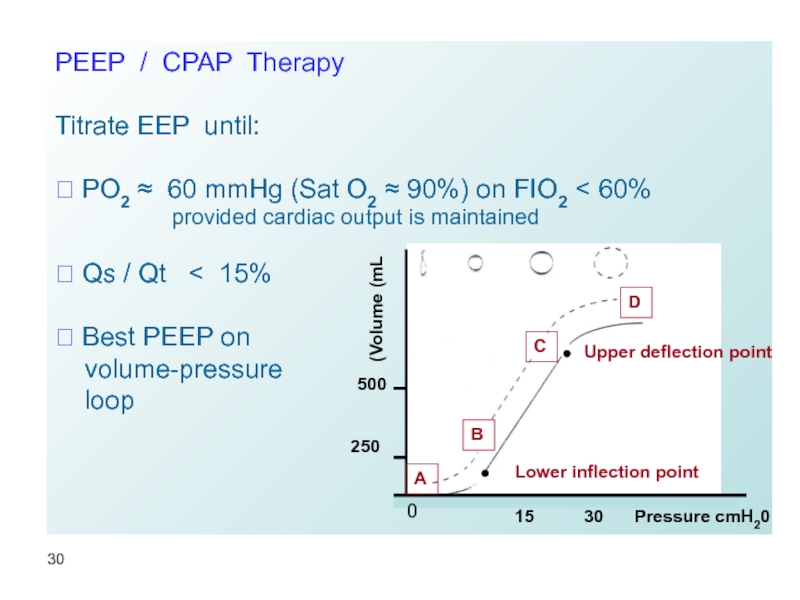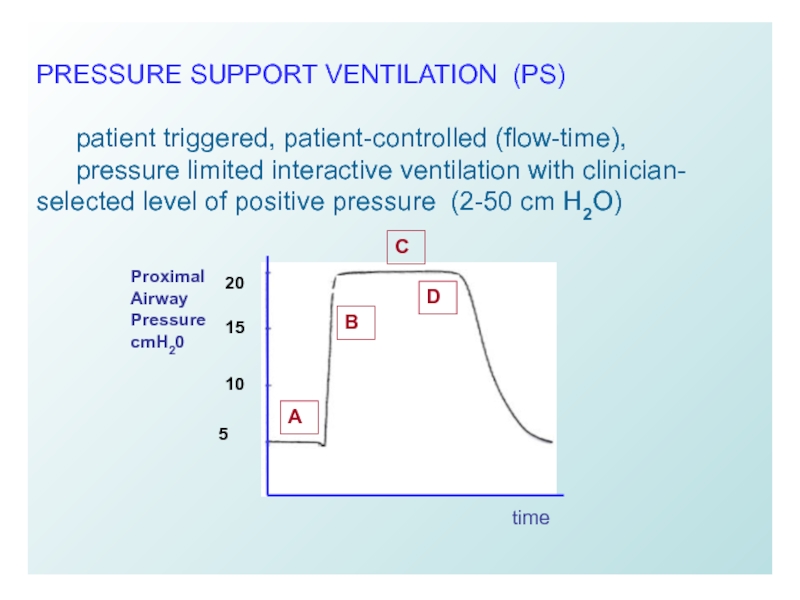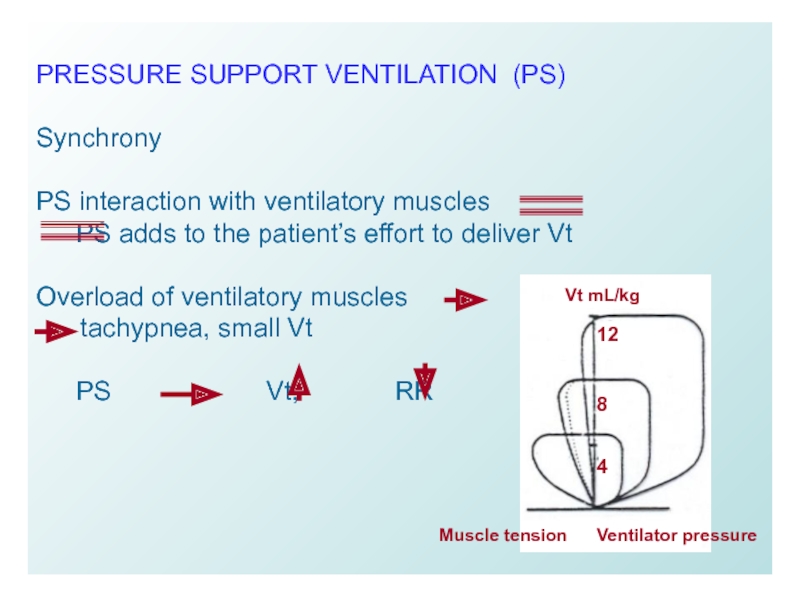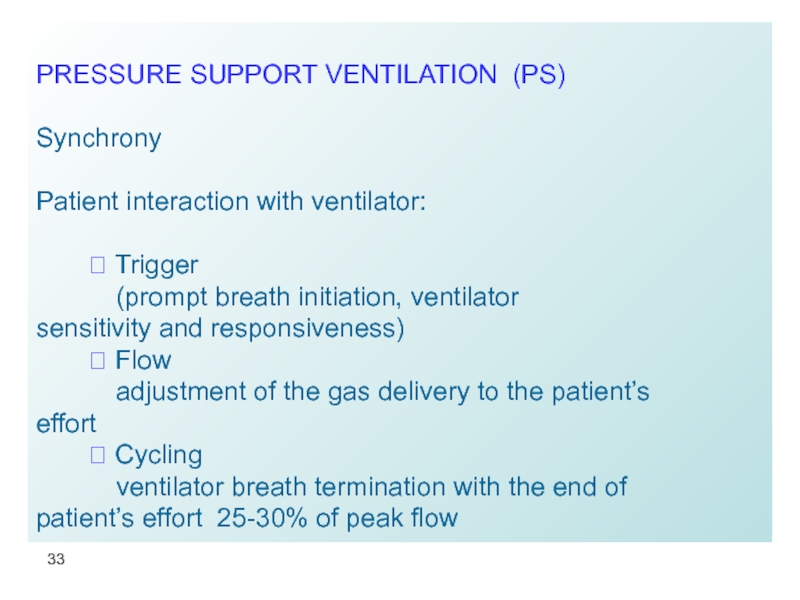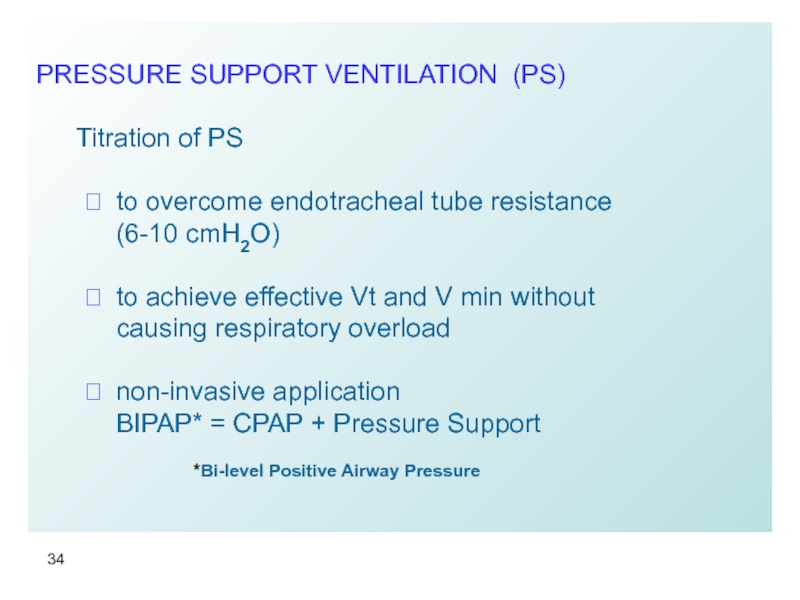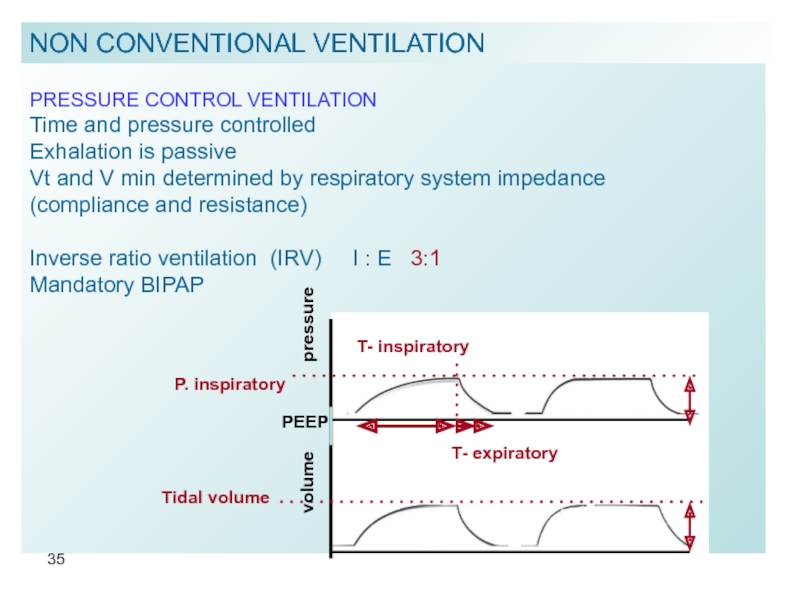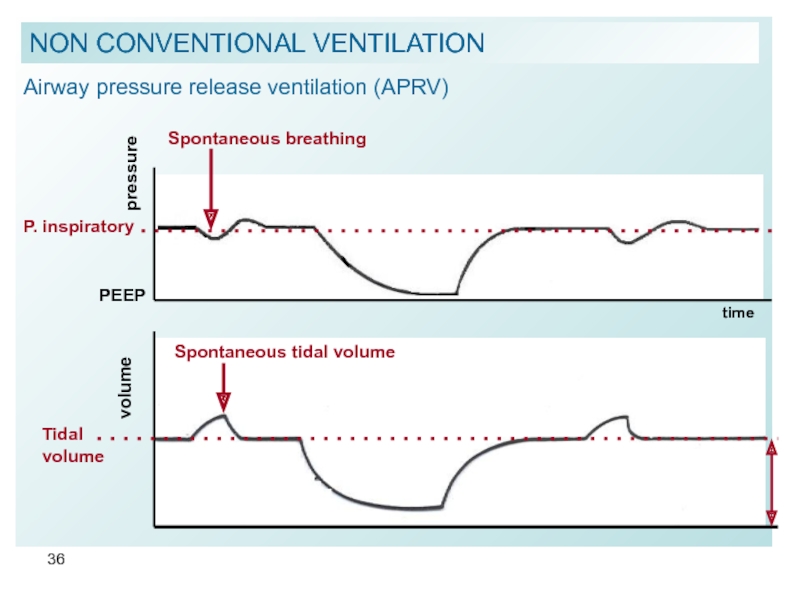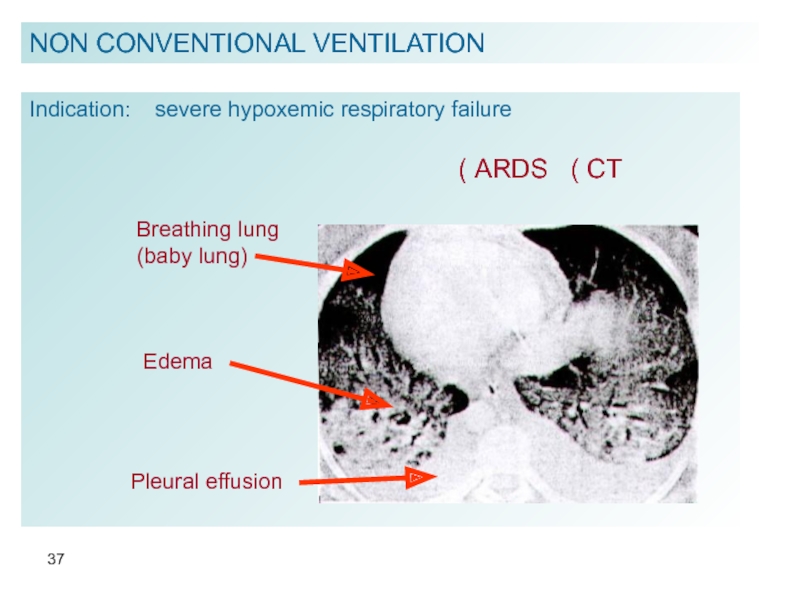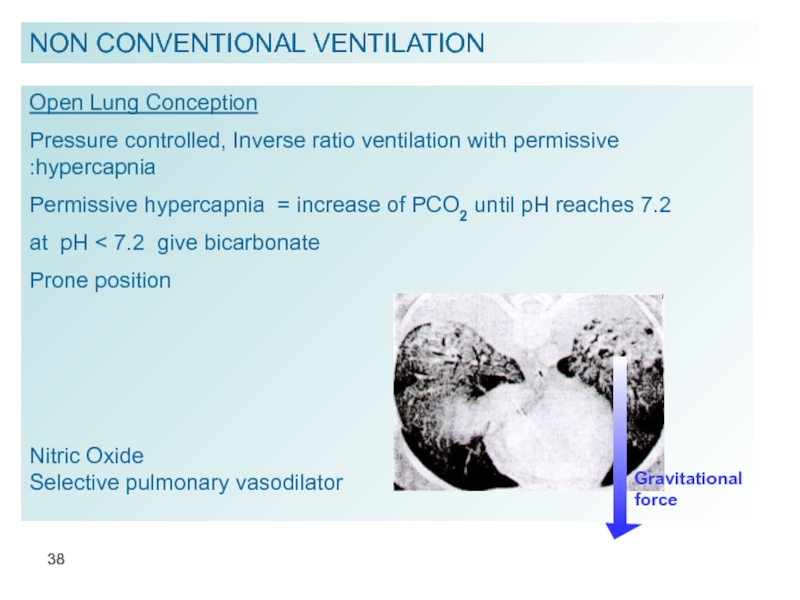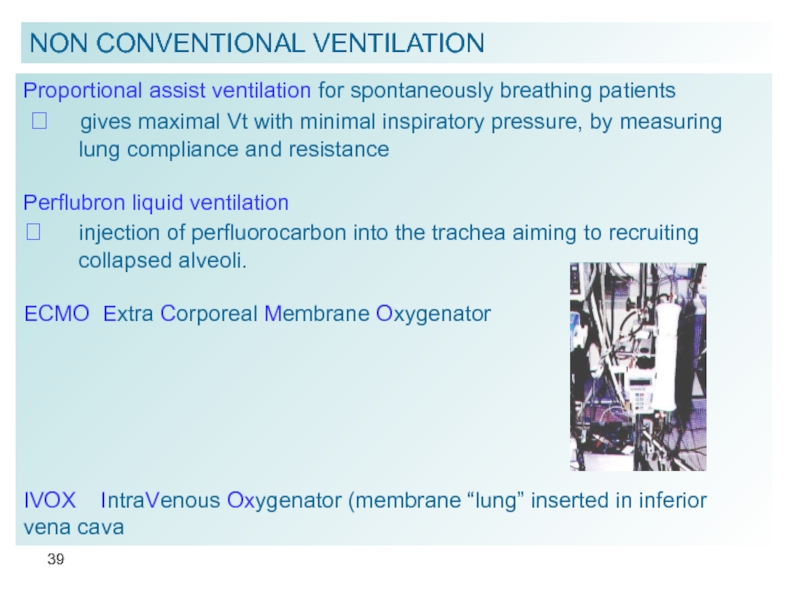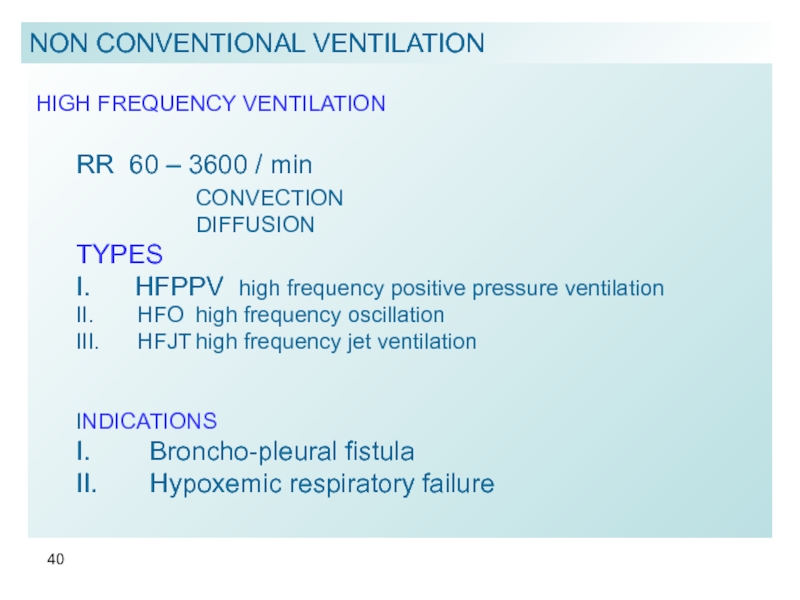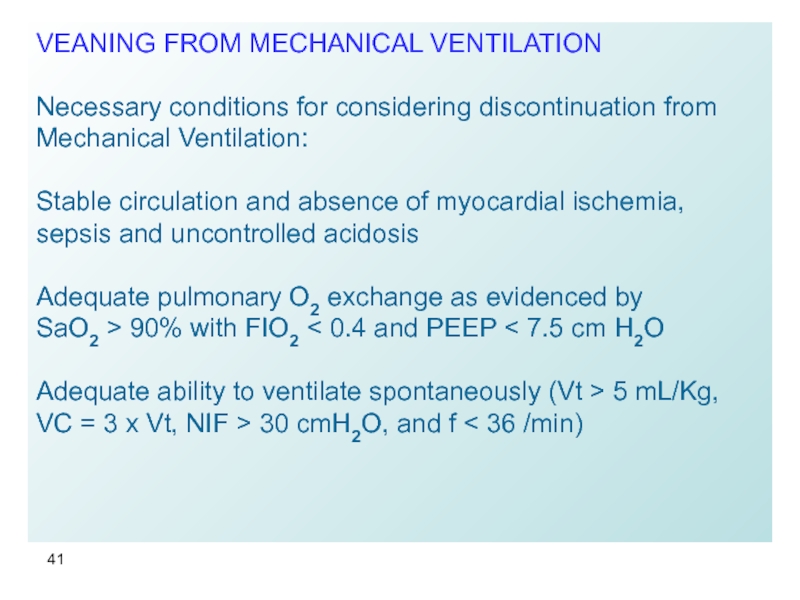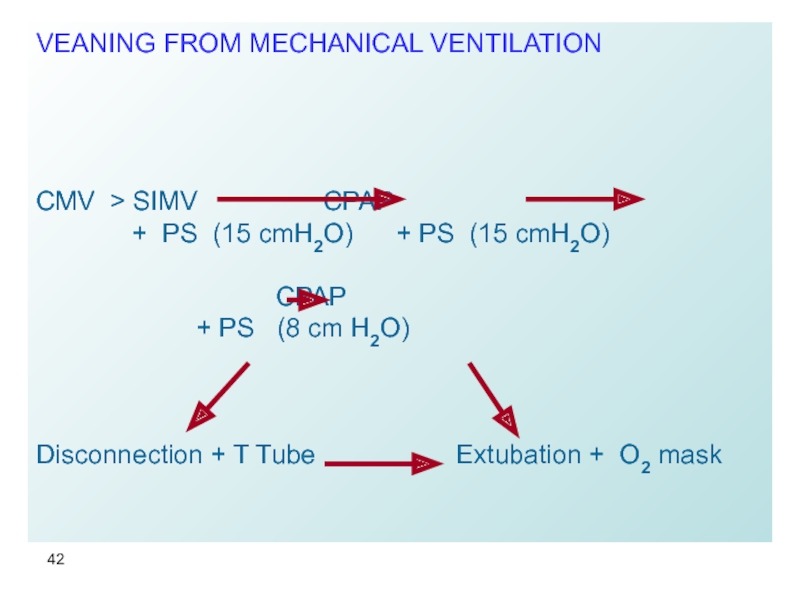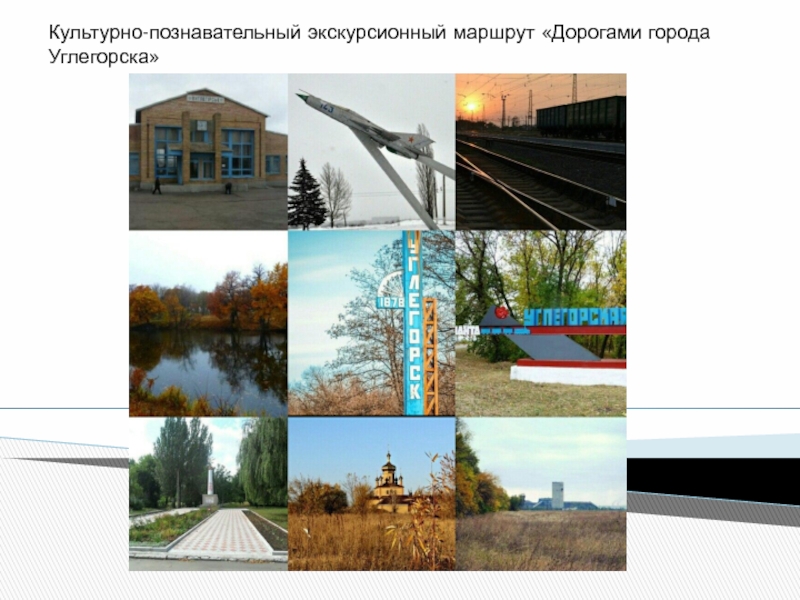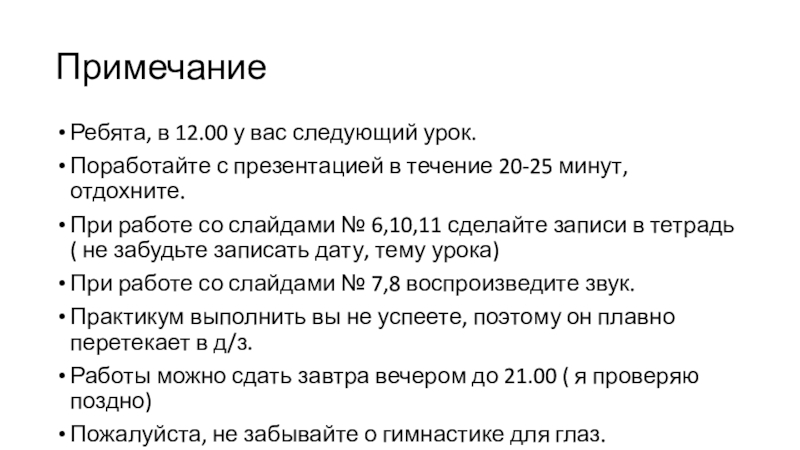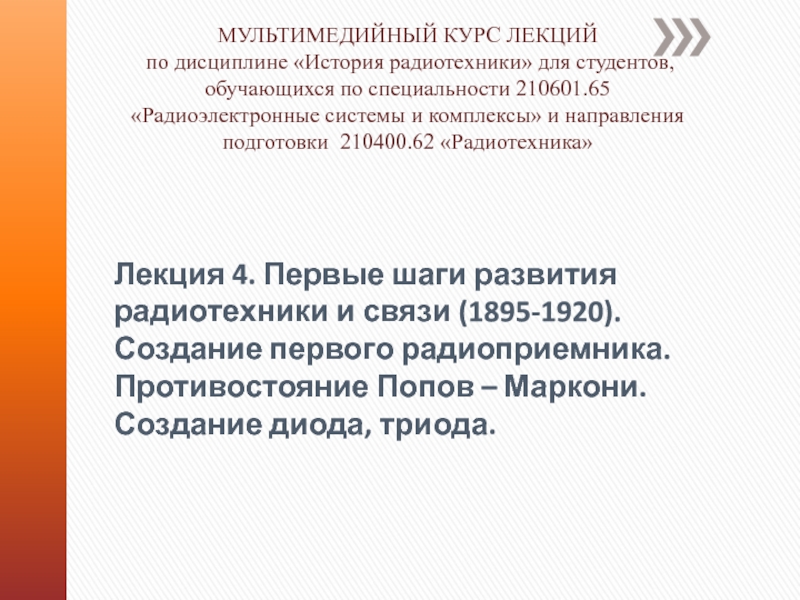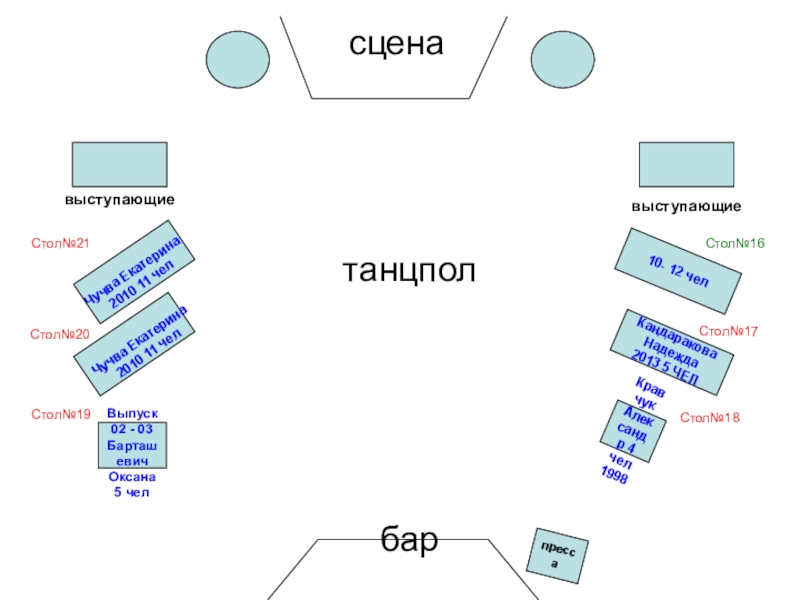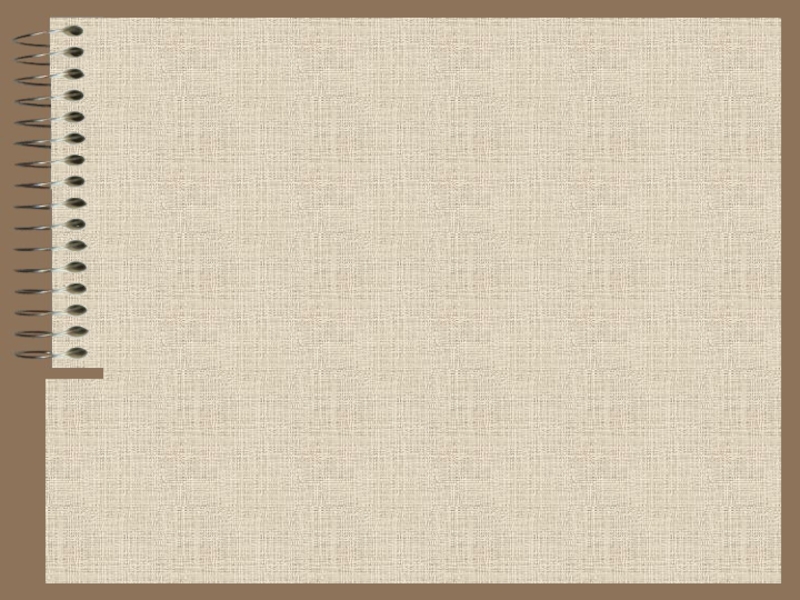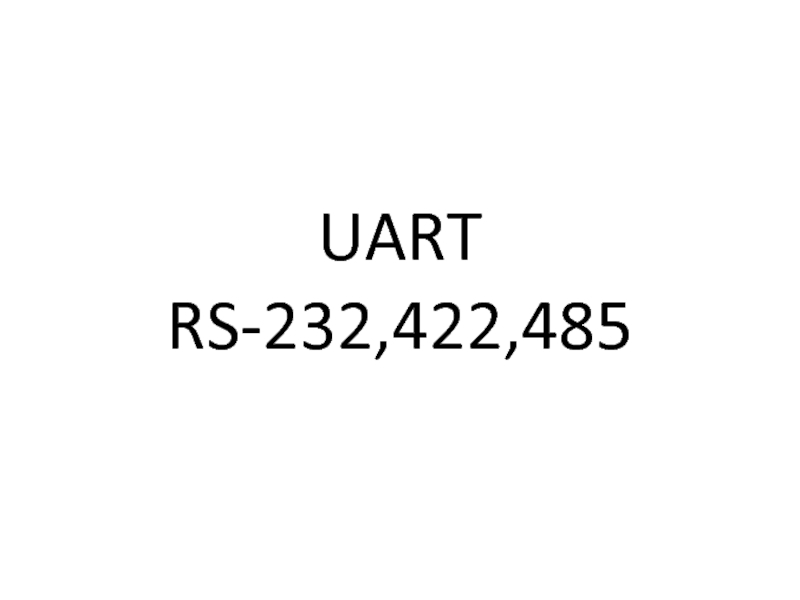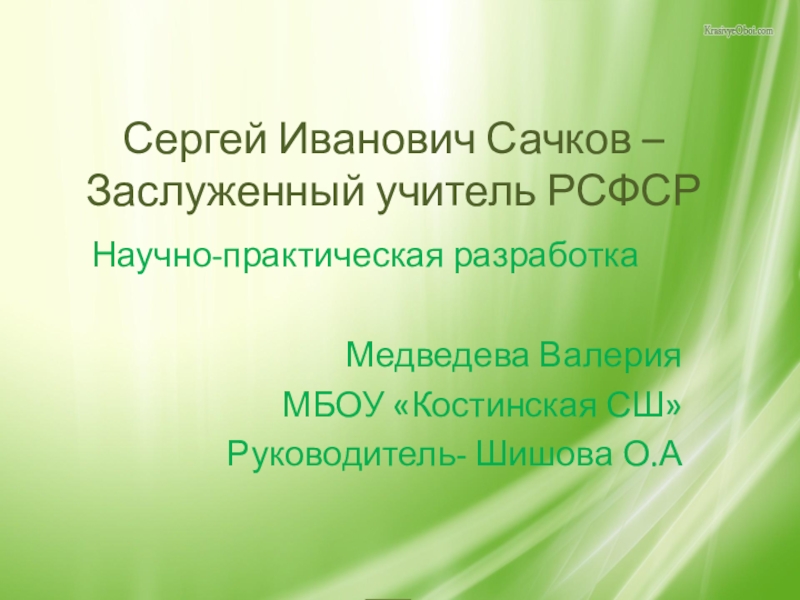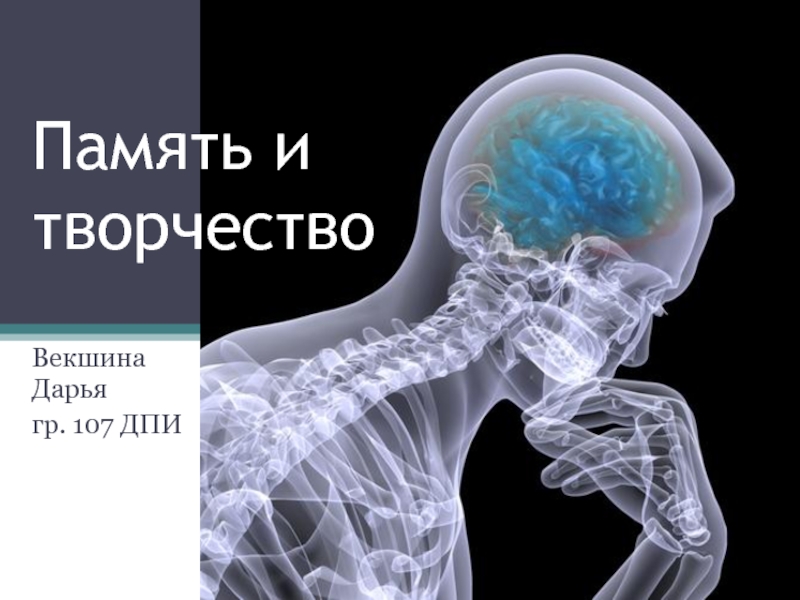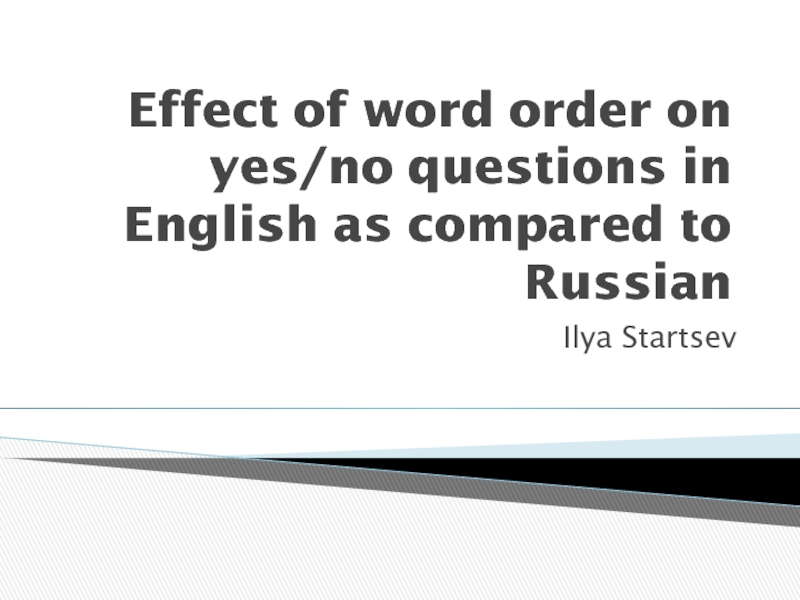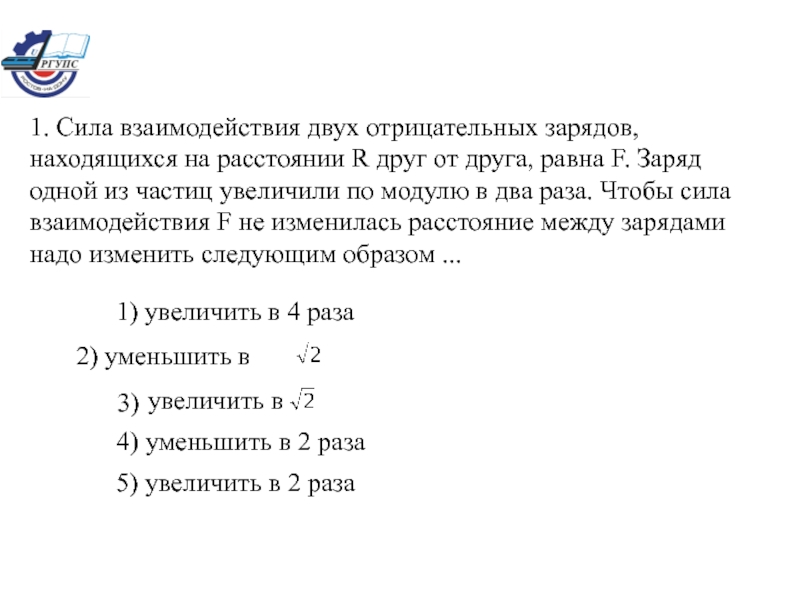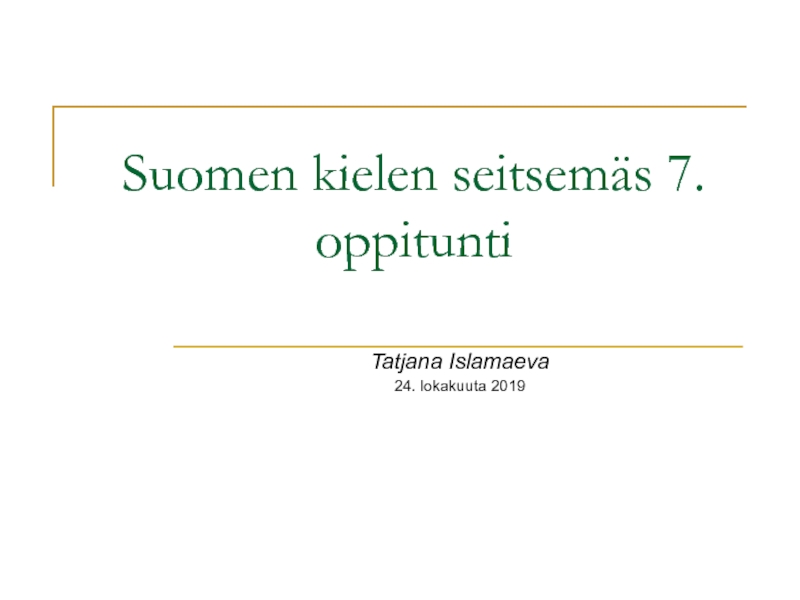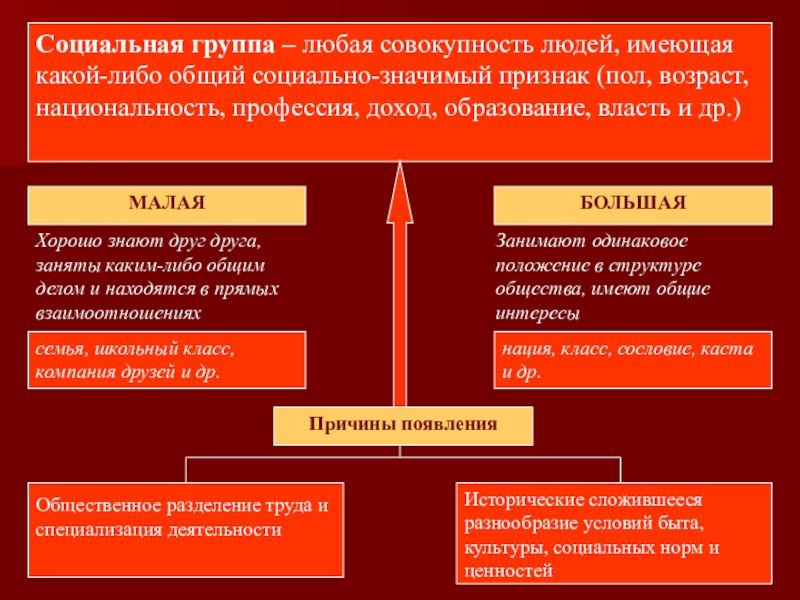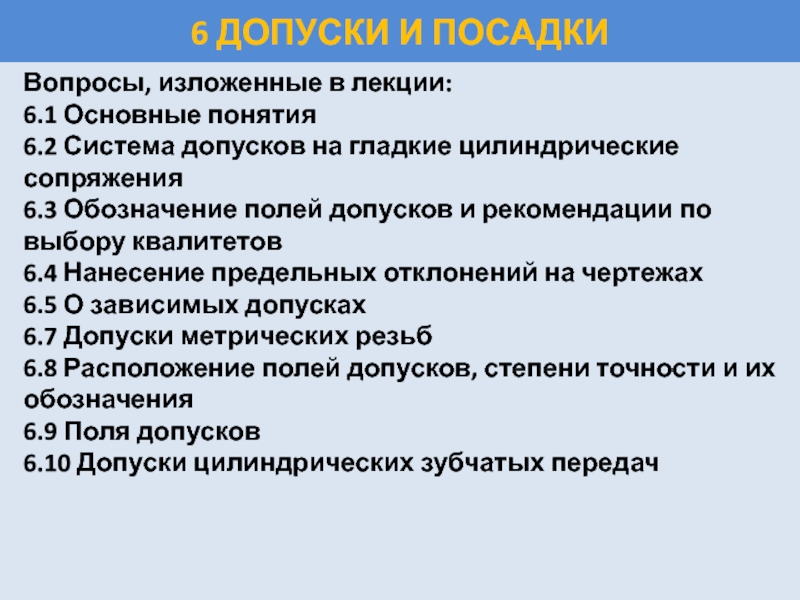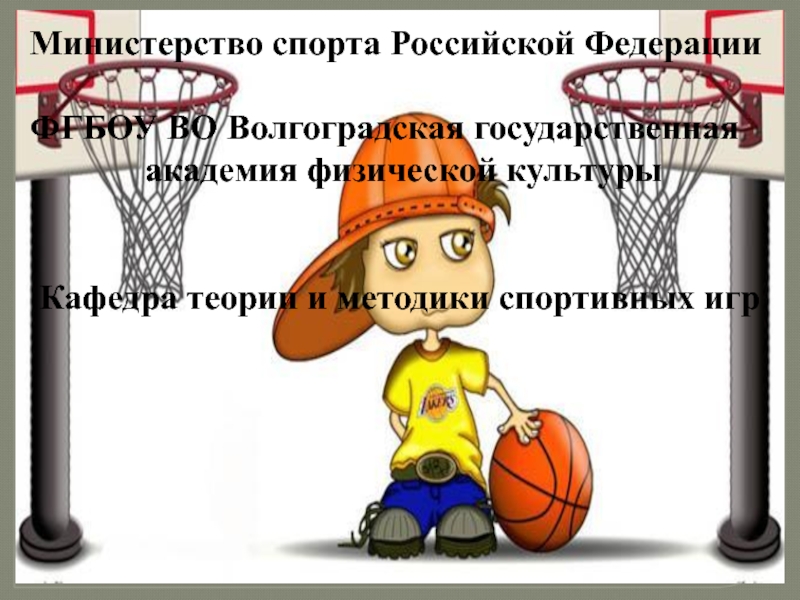Разделы презентаций
- Разное
- Английский язык
- Астрономия
- Алгебра
- Биология
- География
- Геометрия
- Детские презентации
- Информатика
- История
- Литература
- Математика
- Медицина
- Менеджмент
- Музыка
- МХК
- Немецкий язык
- ОБЖ
- Обществознание
- Окружающий мир
- Педагогика
- Русский язык
- Технология
- Физика
- Философия
- Химия
- Шаблоны, картинки для презентаций
- Экология
- Экономика
- Юриспруденция
1 Modes of Ventilation Dr. Eugenia Mahamid Rambam Medical Center
Содержание
- 1. 1 Modes of Ventilation Dr. Eugenia Mahamid Rambam Medical Center
- 2. Modes of VentilationThe main indication for ventilatory support is Respiratory Failure
- 3. Categories of Respiratory FailureHYPOXEMIC ARDS PULMONARY EDEMA PULMONARY HEMORRHAGE PNEUMONIALow compliance lung disease: Low PO2, Low SaO2
- 4. HYPERCARBIC OBSTRUCTION TO AIRFLOW
- 5. ECE CENTRAL DECREASED LEVEL OF
- 6. A MECHANICAL VENTILATOR isa pump providing an
- 7. NO = Nitric Oxide Orientation of patient’s body in gravitational field OTHER MEANS AFFECTING VENTILATION
- 8. GENERAL CLASSES OF VENTILATORSNegative pressure application of
- 9. Negative Pressure Ventilators-Perithoracic pump for replacement failing
- 10. Negative Pressure Ventilators18761930-19501960
- 11. Positive pressure ventilatorsVolume-cycled Delivers set Vt
- 12. Positive pressure ventilatorsEvita 2Dragger - Germany
- 13. VENTILATOR SETTINGSOXYGEN THERAPY
- 14. MINUTE VENTILATION (VOLUME) = Vt x RR Physiologic
- 15. Inspiratory Flow Rate and Inspiratory to
- 16. CMV : Controlled Mandatory VentilationFull mechanical support Maintaining
- 17. CMVfixed ratefixed Vtfixed flow rateFIO2Disadvantages: need for
- 18. ASSIST / CONTROL Mechanical breath initiated by
- 19. IMV INTERMITTENT MANDATORY VENTILATION
- 20. SIMV SYNCHRONIZED INTERMITTENT MANDATORY VENTILATION Synchronization of
- 21. Controlled FIO2Gas sourceReservoirbagConventionalventilatorOne-way valvePEEPand ExhalationValves IMV CIRCUITCONVENTIONAL VENTILATION
- 22. IMV / SIMVAdvantages decreased need in sedatives
- 23. IMV / SIMVDisadvantages respiratory
- 24. PEEP and CPAPDuring continuous mechanical ventilation
- 25. PEEP and CPAPDuring spontaneous breathing
- 26. Слайд 26
- 27. Goals Reduction of shunt recruitment of
- 28. Complications increased intrathoracic pressure
- 29. Complications Increased ADH secretion,
- 30. PEEP / CPAP TherapyTitrate EEP until: PO2
- 31. PRESSURE SUPPORT VENTILATION (PS) patient triggered, patient-controlled (flow-time), pressure
- 32. PRESSURE SUPPORT VENTILATION (PS)SynchronyPS interaction with ventilatory
- 33. PRESSURE SUPPORT VENTILATION (PS) Synchrony
- 34. PRESSURE SUPPORT VENTILATION (PS) Titration of PS
- 35. PRESSURE CONTROL VENTILATIONTime and pressure controlledExhalation is
- 36. Airway pressure release ventilation (APRV)pressurePEEPSpontaneous breathingtimevolumeSpontaneous tidal volumeTidal volumeP. inspiratoryNON CONVENTIONAL VENTILATION
- 37. NON CONVENTIONAL VENTILATIONIndication: severe hypoxemic respiratory failureBreathing lung (baby lung)EdemaARDS ( CT )Pleural effusion
- 38. NON CONVENTIONAL VENTILATIONOpen Lung ConceptionPressure controlled, Inverse
- 39. NON CONVENTIONAL VENTILATIONProportional assist ventilation for spontaneously
- 40. HIGH FREQUENCY VENTILATION RR 60 – 3600 /
- 41. VEANING FROM MECHANICAL VENTILATIONNecessary conditions for considering
- 42. VEANING FROM MECHANICAL VENTILATIONCMV > SIMV CPAP
- 43. Скачать презентанцию
Слайды и текст этой презентации
Слайд 3Categories of Respiratory Failure
HYPOXEMIC
ARDS
PULMONARY EDEMA
PULMONARY HEMORRHAGE
PNEUMONIA
Low compliance lung disease:
Low
PO2, Low SaO2
Слайд 4HYPERCARBIC
OBSTRUCTION TO AIRFLOW
NEUROMUSCULAR DISORDERS
DRUG OVERDOSE
ENDOCRINOPATHIES
Increase in PCO2
Respiratory acidosis
Decrease in
pHCategories of Respiratory Failure
Слайд 5ECE
CENTRAL
DECREASED LEVEL OF
CONSCIOUSNESS
ACUTE MEDICAL
AND SURGICAL CONDITIONS
MECHANICAL VENTILATION IS USED TO
DECREASE WORK OF BREATHING
Categories of Respiratory Failure
Слайд 6A MECHANICAL VENTILATOR is
a pump providing an external source of
energy to push
gases into the lungs and allow for passive exhalation (CO2 elimination).Ventilator’s Changeable parameters
Vt = Tidal Volume
FIO2 = Fraction of Inspired Oxygen
RR = Respiratory Rate
I:E = Inspiratory to Expiratory ratio
EEP = End Expiratory Pressure
PIP = Peak Inspiratory Pressure Inspiratory Flow Rate
Слайд 7 NO = Nitric Oxide
Orientation of patient’s body in
gravitational field
OTHER MEANS AFFECTING VENTILATION
Слайд 8GENERAL CLASSES OF VENTILATORS
Negative pressure
application of negative pressure at
the chest wall and upper abdomen
Positive pressure
application of positive pressure
at airway openingСлайд 9Negative Pressure Ventilators
-
Perithoracic pump for replacement failing patients’ muscles, wide-spread
use for polio epidemics
Manually operated ventilator (Woillez, 1876)
Tank respirator “iron lung”, cuirass, body suits (1930 - 1950)
Patient care problems:
airway obstruction, low efficacy in interstitial lung diseases, patient’s discomfort
Слайд 11Positive pressure ventilators
Volume-cycled
Delivers set Vt at specified RR
and terminates
respiration when Vt is delivered.
Airway pressures are determined by
respiratory system impedance (risk of barotrauma).Pressure-cycled
Limits flow, when set pressure is
delivered (may decrease minute ventilation)
Слайд 13VENTILATOR SETTINGS
OXYGEN THERAPY
O2 delivery =
Qt (1.39 x SaO2 x Hb + 0.0031 x PaO2)
FIO2 1 0.4
Adjustment of oxygen percent to achieve
SaO2 > 90%
FIO2 > 0.6 potential oxygen toxicity
(pulmonary fibrosis)
Слайд 14MINUTE VENTILATION (VOLUME) = Vt x RR
Physiologic Vt
5mL/kg
Mechanical Vt
7 – 10mL/kgLimitation of Vt in cases of:
airway obstruction
one lung patient
PIP > 40 cm H2O
RESPIRATORY RATE
10-12 /min or more
to match metabolic needs of the patient
VENTILATOR SETTINGS
Слайд 15
Inspiratory Flow Rate and Inspiratory to Expiratory Ratio
IFR L/min:
rapidity of airflow in airways
Ti
= Inspiratory Time: the time to complete inspiration Ti = Vt / Flow Rate
TE = Expiratory Time: time to complete exhalation
Ti + TE = T total: respiratory cycle
VENTILATOR SETTINGS
Слайд 16CMV : Controlled Mandatory Ventilation
Full mechanical support
Maintaining full V min.
Reduction
of oxygen and energy consumption
Indications:
Following intubation
Respiratory muscle fatigue ( for
muscle rest)Poor cardiac output ( VO2 of respiratory muscles)
CONVENTIONAL VENTILATION
Слайд 17CMV
fixed rate
fixed Vt
fixed flow rate
FIO2
Disadvantages:
need for sedatives + relaxants
unresponsiveness to the changing V min. of patient
muscle atrophy
CONVENTIONAL
VENTILATIONAirway pressure
Flow
inspirium
expirium
Patient’s spontaneous effort
Слайд 18ASSIST / CONTROL
Mechanical breath initiated by patient’s negative pressure.
Every breath is machine supported (set Vt)
Disadvantages:
alkalosis
intrinsic PEEP
barotrauma: pneumothorax, pneumomediastinum,
subcutaneous emphysema, tension air cyst
CONVENTIONAL VENTILATION
Airway pressure
Flow
inspirium
expirium
Patient’s spontaneous effort
Слайд 19 IMV INTERMITTENT MANDATORY VENTILATION
combined mechanical and
spontaneous breathing
(CMV + spontaneous)
CONVENTIONAL VENTILATION
Spontaneous ventilation
5
0
inspirium
expirium
IMV
5
0
5
0
CMV
Patient’s spontaneous effort
Слайд 20SIMV SYNCHRONIZED INTERMITTENT MANDATORY VENTILATION
Synchronization of the ventilator delivered
Vt with the
patient’s spontaneous breathing.
Prevention
of ventilator stacking by timing window.CONVENTIONAL VENTILATION
A
B
Timing window
Patient’s spontaneous effort
Time (sec)
Pressure
cm H2O
PEEP
Слайд 21Controlled FIO2
Gas source
Reservoir
bag
Conventional
ventilator
One-way valve
PEEP
and
Exhalation
Valves
IMV CIRCUIT
CONVENTIONAL VENTILATION
Слайд 22
IMV / SIMV
Advantages
decreased need in sedatives
prevention of
muscle atrophy
lower airway pressure and intrathoracic pressure
hemodynamic stability reduction in alkalosis
patient’s ability to regulate his rate and Vt according to metabolic requirements
CONVENTIONAL VENTILATION
Слайд 23
IMV / SIMV
Disadvantages
respiratory muscle fatigue
increased
work of breathing due to highly resistant respiratory circuit, small
diameter (ETT) possibility of respiratory acidosis
risk of cardiac decompensation
in patient with heart disease
CONVENTIONAL VENTILATION
Слайд 24PEEP and CPAP
During continuous mechanical ventilation
PEEP
Positive End Expiratory Pressure
50
40
30
20
10
0
cm H2O
CMV
PEEP
50
40
30
20
10
0
CMV
PEEP
Patient triggered
cm H2O
Слайд 25PEEP and CPAP
During spontaneous breathing
with or without
inspiratory support
CPAP Continuous Positive Airway Pressure
15
10
5
0
- 5
inspiration
expiration
PEEP
Слайд 26
Mechanism
- Decreases Qs/Qt
without reducing edema
- Reduces number
of flooded alveoli
- Redistributes edema to
peribroncho vascular
interstitial spaces
- Decreases work
of breathing
- Decreases preload
NON PEEP
PEEP
78.6 μ
146.8 μ
80%
20 %
Qs / Qt 23.8 % 5.1 %
PEEP & CPAP
Слайд 27
Goals
Reduction of shunt
recruitment of previously collapsed alveoli
ventilation
of non-ventilated zones
continuous gas exchange (during expiration)
Prevention
of atelectasisprevention of brisk alveolar inflation and deflation
> protection of surfactant and pulmonary parenchyma
PEEP and CPAP
Слайд 28
Complications
increased intrathoracic pressure
decrease of venous returns
decrease of cardiac outputEFFECT of PEEP
venous
compression
PEEP and CPAP
Слайд 29
Complications
Increased ADH secretion, decrease of renal
artery perfusion pressure
decrease of urinary output and creatinine
clearance decreased venous return from brain
increased ICP
decrease of CPP
barotrauma – induced by PEEP ≈ 20%
PEEP and CPAP
Слайд 30PEEP / CPAP Therapy
Titrate EEP until:
PO2 ≈ 60 mmHg
(Sat O2 ≈ 90%) on FIO2 < 60%
provided cardiac output is maintained Qs / Qt < 15%
Best PEEP on
volume-pressure
loop
15
30
B
D
C
A
Lower inflection point
Upper deflection point
500
250
Volume (mL)
Pressure cmH20
0
Слайд 31
PRESSURE SUPPORT VENTILATION (PS)
patient triggered, patient-controlled (flow-time),
pressure limited interactive ventilation
with clinician- selected level of positive pressure (2-50 cm H2O)
20
15
10
5B
C
A
D
time
Proximal
Airway
Pressure
cmH20
Слайд 32
PRESSURE SUPPORT VENTILATION (PS)
Synchrony
PS interaction with ventilatory muscles
PS adds
to the patient’s effort to deliver Vt
Overload of ventilatory muscles
tachypnea, small VtPS Vt, RR
Vt mL/kg
Ventilator pressure
Muscle tension
12
8
4
Слайд 33
PRESSURE SUPPORT VENTILATION (PS)
Synchrony
Patient interaction
with ventilator:
Trigger
(prompt breath initiation,
ventilator sensitivity and responsiveness) Flow
adjustment of the gas delivery to the patient’s effort
Cycling
ventilator breath termination with the end of patient’s effort 25-30% of peak flow
Слайд 34
PRESSURE SUPPORT VENTILATION (PS)
Titration of PS
to overcome endotracheal
tube resistance
(6-10 cmH2O)
to achieve effective Vt and V
min without causing respiratory overload
non-invasive application
BIPAP* = CPAP + Pressure Support
*Bi-level Positive Airway Pressure
Слайд 35
PRESSURE CONTROL VENTILATION
Time and pressure controlled
Exhalation is passive
Vt and V
min determined by respiratory system impedance
(compliance and resistance)
Inverse ratio ventilation
(IRV) I : E 3:1Mandatory BIPAP
PEEP
pressure
T- inspiratory
T- expiratory
P. inspiratory
Tidal volume
volume
NON CONVENTIONAL VENTILATION
Слайд 36
Airway pressure release ventilation (APRV)
pressure
PEEP
Spontaneous breathing
time
volume
Spontaneous tidal volume
Tidal volume
P. inspiratory
NON
CONVENTIONAL VENTILATION
Слайд 37NON CONVENTIONAL VENTILATION
Indication: severe hypoxemic respiratory failure
Breathing lung
(baby
lung)
Edema
ARDS ( CT )
Pleural effusion
Слайд 38NON CONVENTIONAL VENTILATION
Open Lung Conception
Pressure controlled, Inverse ratio ventilation with
permissive hypercapnia:
Permissive hypercapnia = increase of PCO2 until pH reaches
7.2at pH < 7.2 give bicarbonate
Prone position
Nitric Oxide
Selective pulmonary vasodilator
Gravitational force
Слайд 39NON CONVENTIONAL VENTILATION
Proportional assist ventilation for spontaneously breathing patients
gives maximal Vt with minimal inspiratory pressure, by
measuringlung compliance and resistance
Perflubron liquid ventilation
injection of perfluorocarbon into the trachea aiming to recruiting
collapsed alveoli.
ECMO Extra Corporeal Membrane Oxygenator
IVOX IntraVenous Oxygenator (membrane “lung” inserted in inferior
vena cava
Слайд 40
HIGH FREQUENCY VENTILATION
RR 60 – 3600 / min
CONVECTION
DIFFUSION
TYPES
I.
HFPPV high frequency positive pressure ventilation
II.
HFO high frequency oscillationIII. HFJT high frequency jet ventilation
INDICATIONS
I. Broncho-pleural fistula
II. Hypoxemic respiratory failure
NON CONVENTIONAL VENTILATION
Слайд 41VEANING FROM MECHANICAL VENTILATION
Necessary conditions for considering discontinuation from Mechanical
Ventilation:
Stable circulation and absence of myocardial ischemia, sepsis and uncontrolled
acidosisAdequate pulmonary O2 exchange as evidenced by
SaO2 > 90% with FIO2 < 0.4 and PEEP < 7.5 cm H2O
Adequate ability to ventilate spontaneously (Vt > 5 mL/Kg, VC = 3 x Vt, NIF > 30 cmH2O, and f < 36 /min)
Слайд 42VEANING FROM MECHANICAL VENTILATION
CMV > SIMV CPAP
+ PS (15 cmH2O) + PS
(15 cmH2O)CPAP
+ PS (8 cm H2O)
Disconnection + T Tube Extubation + O2 mask
